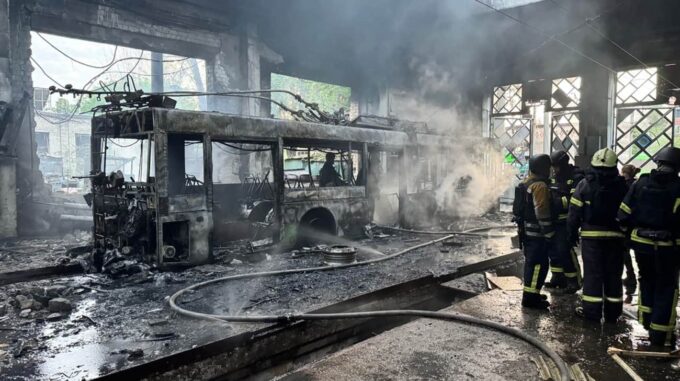Russian missiles strike Kharkiv again: “Shahed” drones destroy trolleybus depot and spread destruction across the city

At a time when Kharkiv is still recovering from previous missile attacks and is anxious about a possible new assault, the night of May 29-30 brought the city another powerful blow. Russian forces, using Shahed-type kamikaze drones, demonstrated their destructive intent once more, causing significant damage to infrastructure in the Slobidskyi district, including the trolleybus depot. According to Kharkiv mayor Ihor Terekhov, Russian occupiers launched a total of eight unmanned aerial vehicles, each directed specifically at the depot where trolleybuses were undergoing maintenance and repairs. The city leader emphasized that preemptive measures regarding the distribution of transport and the evacuation of technical equipment helped prevent even greater destruction and human casualties. "Most of the city’s transport was relocated in advance, which was one of the factors that helped reduce the extent of the damage. Still, one trolleybus was completely destroyed, and another 18 incurred various damages and require repairs," he stated during a briefing. Unfortunately, as a result of this tragic strike, several residential buildings in the neighborhood were also damaged — debris and shattered windows are clear signs of the destruction that has engulfed this part of the city. Preliminary reports indicate that 33 residential premises located near the depot and affected by the attack suffered damage from debris and the blast wave. The damage is significant: most windows are shattered, and some buildings sustained serious cracks and facade damages. In addition to technical losses and damaged homes, two employees of the enterprise, who were on shift during the attack, were seriously injured. Terekhov confirmed that both specialists received injuries and were provided medical assistance. Asked about the purpose of the attack, the mayor emphasized that the enemy drones targeted civil infrastructure and residential sectors, not military objects. "Overall, this attack was directed at the civilian population of our city, including civilian and communal infrastructure. The enemy has never attempted to target military facilities or positions here. This is an assault on Kharkiv residents who have been fighting for their survival and peaceful life for months," he underscored. It is important to highlight that this attack on Kharkiv once again demonstrated how dangerous and destructive modern warfare is, especially with the use of unmanned lethal drones. Tensions are high in the city, and residents’ reactions are united and determined. People have once again rallied around the idea of recovery and resistance, as each new strike serves as a reminder of the human and peace-cost in this conflict. Images and footage of the destruction, shared by local media and witnesses during this tragedy, clearly captured the scale of devastation both at the depot and in the surrounding residential neighborhoods. Local authorities continue to analyze the situation and are preparing a plan to restore the damaged infrastructure. They are also reaching out to residents and the international community for support and aid in overcoming the consequences of this incident. This incident once again underscores that Kharkiv remains at the forefront of the fight against Russian aggression, and each new attack today marks another worrying flashpoint in the war, pushing the city into a state of readiness for any scenario. Authorities urge residents to stay calm, follow safety rules, and remember that their resistance and solidarity are the most effective weapons in this struggle for peace and human life.

